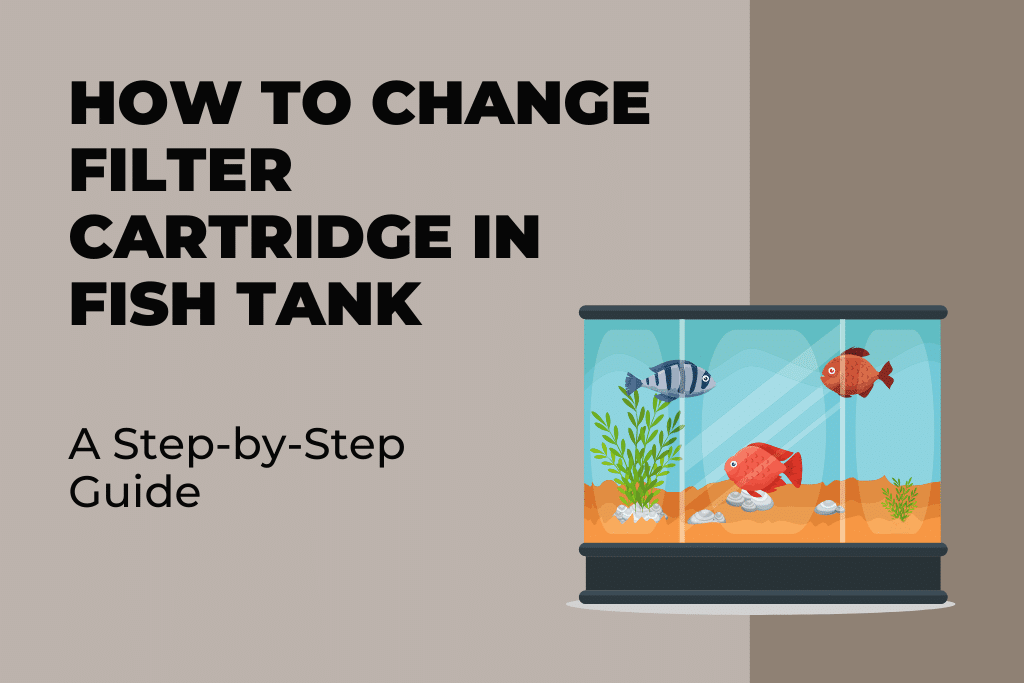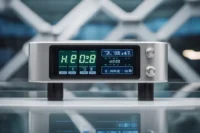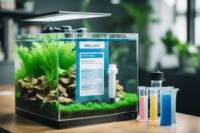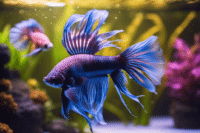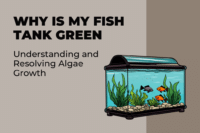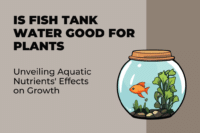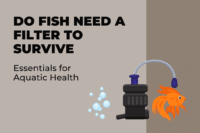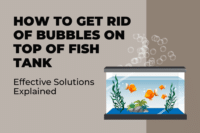Maintaining a balanced environment within a fish tank is vital to its aquatic inhabitants, with water quality being an essential aspect of aquarium health. Filter cartridges play an integral part in maintaining this quality by trapping debris and encouraging beneficial bacteria blooms; over time however, their effectiveness diminishes over time and knowing when and how to change out filters is essential to maintaining balance within an ecosystem.
Replacing a filter cartridge requires more than simply swapping out old for new. Doing it correctly ensures the preservation of beneficial bacterial colonies vital for maintaining an aquarium’s nitrogen cycle, which requires selecting the appropriate filter cartridge and understanding its procedures to ensure a seamless transition without jeopardizing its water quality. Regular maintenance – such as replacement filters – will prevent common issues while creating an ideal environment for fish.
Key Takeaways
- Proper filter cartridge maintenance ensures optimal water quality. Retaining beneficial bacteria during replacement is key,
- while regular inspection and maintenance will prevent common issues with aquarium filtration systems. Achieve Aquarium Filtration Understanding.
Understanding Aquarium Filtration
Filtration in an aquarium is essential to creating a pristine aquatic environment. Filters serve many functions and understanding their differences is critical for keeping aquatic life thriving.
Mechanical, Chemical, And Biological Filtration Solutions Available
Mechanical filtration removes physical debris through materials like sponges or filter floss. Debris is trapped, creating clear water for consumption, but must be regularly cleared away to avoid clogs.
Chemical filtration utilizes activated carbon or similar materials to absorb pollutants that mechanical filters cannot catch. Filter media must be changed regularly in order to remain effective.
Biological filtration is an integral component of the nitrogen cycle, where beneficial bacteria use porous materials like ceramic rings or bio-balls as substrates to break down harmful ammonia and nitrites into forms that can be broken down further by other forms of bacteria. To maximize bacterial colonization, this filtration type employs ceramic rings or bio-balls with large surface areas so bacteria have plenty of surface area available to them for colonizing.
Importance Of Beneficial Bacteria
Beneficial bacteria are at the core of any biological filter, providing essential nitrogen cycle support by converting toxic ammonia into less harmful nitrates and nitrites. Nitrifying bacteria are especially crucial to fish health by helping prevent ammonia and nitrite build-up in an aquarium environment, so when changing filters it’s vital that any replacement system supports growth and maintenance of these essential microorganisms that play such an important role in keeping an aquarium thriving.
How Can You Know When It is Time to Replace the Filter Cartridge
Maintaining a healthy fish tank requires routine inspection and adjustment of water parameters and filter equipment, including knowing when it is time to replace the filter cartridge for maximum water quality and the wellbeing of aquatic life.
Monitoring Water parameters.
Regular testing of water parameters is essential in identifying whether a filter cartridge needs replacing. Aquarists should analyze levels of ammonia, nitrite and nitrate; ammonia should remain below 0ppm while nitrate levels should ideally fall between 20-25ppm; sudden spikes could indicate that its filter cartridge is no longer performing efficiently.
Signs That Recommend A Replacement Are Present
There are multiple signs that indicate it’s time for a filter cartridge replacement:
Poor Water quality: If the water becomes murky or there’s an accumulation of waste, it may be time for a cartridge replacement. Reduced Water Flow: Any noticeable reduction in flow could indicate that your filter cartridge has become clogged with debris.
Frequent Water Changes: Needing to change the water more often than usual may indicate that your filter isn’t operating efficiently.
One should keep in mind that replacement frequency depends on both the type of filter and bioload in an aquarium. Mechanical filters usually need replacing every two to four weeks, while biological ones have longer livespan. It is essential to heed manufacturer guidelines and monitor tank-specific indicators for maximum results.
Finding The Appropriate Filter Cartridge
Selecting an ideal filter cartridge is key for keeping an aquarium healthy. Different tanks and fish species have specific filtration needs that need to be met by selecting an appropriate type of cartridge filter.
Are You Contemplating Tank Size And Fish Type Options?
Filter cartridge selection depends heavily upon tank size and fish species. Tanks with larger volumes require cartridges capable of managing increased water flow without becoming clogged up quickly; larger tanks over 40 gallons benefit from mechanical filter cartridges that efficiently process higher volumes of water and debris.
Small Tanks (20-50 Gallons): Slim and compact cartridges should typically suffice for waste filtration needs. With medium tanks (20-40 Gallons), larger waste capacity cartridges should be utilized; finally large tanks (> 40 Gallons) require heavy-duty cartridges with enhanced mechanical filtration capability.
Different species of fish require various forms of filtration. Delicate or small species benefit most from gentle water flow provided by cartridge filters that ensure gentle waterflow to prevent stress or harm; larger and more active fish may require robust filtration systems to preserve water quality.
Filter Cartridge Types Available Now
Filter cartridges fall into three general categories: mechanical, biological and chemical; each serving its own specific function.
Mechanical Filter Cartridges: Mechanical filter cartridges are designed to remove physical debris from tank water. They usually feature fine mesh or foam that traps particulate matter.
Biological Filter Cartridges: Filter cartridges made of porous materials like ceramic or sponge provide an ideal habitat for beneficial bacteria to colonize, helping them break down harmful ammonia and nitrite levels that pose threats to fish.
Chemical Filter Cartridges: Filter cartridges containing activated carbon or resins designed to absorb impurities can keep water clearer while eliminating unpleasant odors.
Selecting an effective filter cartridge involves choosing from among various types to meet the unique needs of your tank. While biological filtration may be essential to supporting the nitrogen cycle, tanks with high bioload may require additional chemical filtration in order to keep their water clear and maintain clarity.
How To Change Filter Cartridge
Replacing a filter cartridge is an integral step towards maintaining the health of your fish tank, and should be undertaken carefully and methodically for maximum effectiveness. Proper planning, implementation and follow-up ensure a successful changeover that safeguards aquatic environments.
Prepare Before Replacing
Before starting to replace a filter cartridge, gather all necessary supplies: a new filter cartridge, bucket, water conditioner and replacement filter media as necessary. Be sure to get one that is appropriate to your filter model; rinse any new media you are installing using tap water in order to eliminate dust or debris and use water conditioner on it afterwards to eliminate chlorine or harmful chemicals that might remain.
Step-By-Step Replacement Process
Stop and Unplug: Carefully unplug the filter and disconnect any necessary hoses or parts as soon as you notice an issue.
- Removing Old Cartridge:Take care in disassembling the filter housing. Gradually unhook and take out the old filter cartridge slowly so as not to disturb beneficial bacteria colonies.
- Clean Filter Components:With the extracted water in a bucket, use to carefully scrub any accessible parts of the filter that have become dirty. Avoid using tap water as this could contain chlorine that could kill beneficial bacteria.
- Insert New Cartridge: Clean out and install your filter cartridge as instructed, positioning it so that both types of media come into contact.
- Reassemble Filter Housing:Make sure that all parts fit tightly without gaps, reconnect any hoses or fittings securely, and secure any additional connections securely.
- Restart the Filter:Unplug and monitor the filter to ensure its proper functioning.
Checking after Cartridge Replacement
After installing the new filter cartridge, observe your fish tank closely to assess water clarity and flow rate, any leaks or unusual noises coming from the filter, any leakage from it and ensure all parameters remain stable over the following few days; this should indicate a successful cartridge change.
Maintaining aquarium health requires some regular upkeep.
An aquarium environment needs regular care and attention from its keepers in order to remain clean and sustain its ecosystem for aquatic life.
Regular Maintenance Tips Proper aquarium care requires regular maintenance that entails:
Regular Water changes: For best results, change out 10-20% of your water each week in order to maintain proper parameters and limit algae growth. Filter Checks: Check and change out filter cartridges every 2-4 weeks so as to prevent clogs and maintain effective biological filtration systems.
Substrate Cleaning: Employ a gravel siphon to collect food scraps that might harbor harmful bacteria and remove uneaten food waste, which can create an ideal breeding ground for disease. Substrate Care And Aquatic Life Balance
Maintaining clean water must take into account aquatic organisms’ needs.
Bacterial Balance: When changing filters, it’s essential to maintain beneficial bacteria which help break down waste. Stress Reduction: For maximum stress-reduction in aquatic pets, avoid complete overhauls; instead perform cleaning tasks gradually over time.
Monitor Parameters: Keep an eye on water quality levels such as pH, ammonia, nitrites and nitrates to create a safe environment for fish and plants. Troubleshoot Common Filter Issues (TCOFs).
Maintaining an aquarium requires proper filtration, as its delicate ecosystem depends on water flow and filtration while simultaneously managing chemical imbalances. Filtration plays a key role in maintaining its delicate equilibrium by handling water flow and filtering as well as chemical imbalances.
Reduced Water flow and filteration systems
Reduced water flow can indicate that an existing cartridge has become clogged or overused, prompting one to examine their filter for debris as well as examine the intake tubes which may become blocked over time. Furthermore, inspecting your impeller for blockages would also help. Without effective water flow filtration processes cannot cyclically purify water of physical and soluble waste efficiently, leading to harmful conditions for aquatic life as ammonia, nitrite and nitrate may not be properly processed, creating an unsafe environment.
Are You Suffering From Chemical Imbalances? How Should I Approach them
Troubleshooting Common Filter Issues
Chemical imbalances in an aquarium tank can have serious repercussions for its inhabitants’ overall wellbeing, such as fish and plants. To effectively manage them, water parameters like pH, ammonia, nitrite and nitrate levels should be regularly tested to monitor an imbalance. When there’s a chemical issue it may be necessary to replace filter cartridges as these become saturated with toxins over time and lose efficacy; or consult an aquarium filter troubleshooting guide in order to diagnose and address it quickly and efficiently. Regular monitoring ensures an ideal environment for its inhabitants’ wellbeing.
